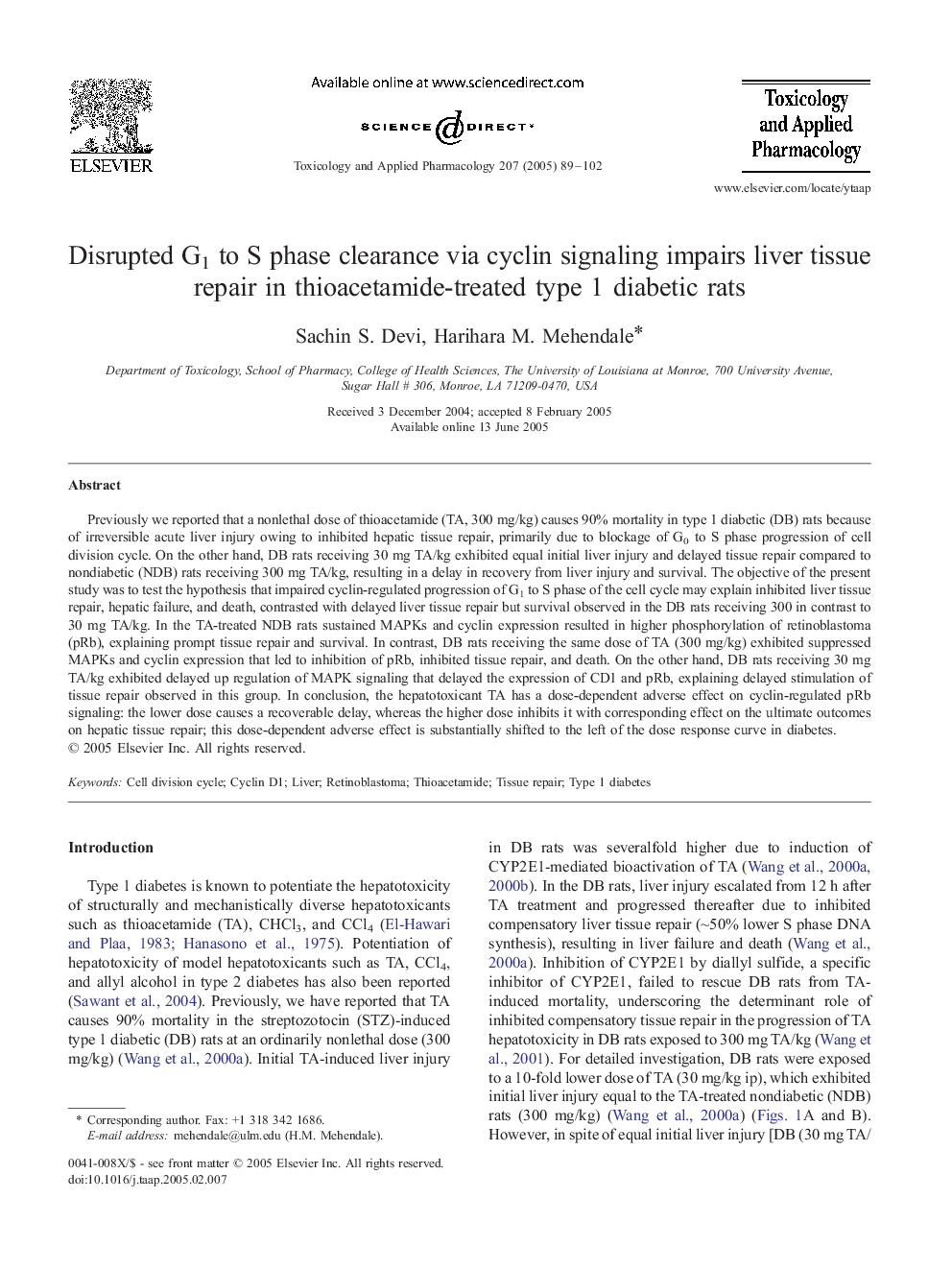| Article ID | Journal | Published Year | Pages | File Type |
|---|---|---|---|---|
| 9017678 | Toxicology and Applied Pharmacology | 2005 | 14 Pages |
Abstract
Previously we reported that a nonlethal dose of thioacetamide (TA, 300 mg/kg) causes 90% mortality in type 1 diabetic (DB) rats because of irreversible acute liver injury owing to inhibited hepatic tissue repair, primarily due to blockage of G0 to S phase progression of cell division cycle. On the other hand, DB rats receiving 30 mg TA/kg exhibited equal initial liver injury and delayed tissue repair compared to nondiabetic (NDB) rats receiving 300 mg TA/kg, resulting in a delay in recovery from liver injury and survival. The objective of the present study was to test the hypothesis that impaired cyclin-regulated progression of G1 to S phase of the cell cycle may explain inhibited liver tissue repair, hepatic failure, and death, contrasted with delayed liver tissue repair but survival observed in the DB rats receiving 300 in contrast to 30 mg TA/kg. In the TA-treated NDB rats sustained MAPKs and cyclin expression resulted in higher phosphorylation of retinoblastoma (pRb), explaining prompt tissue repair and survival. In contrast, DB rats receiving the same dose of TA (300 mg/kg) exhibited suppressed MAPKs and cyclin expression that led to inhibition of pRb, inhibited tissue repair, and death. On the other hand, DB rats receiving 30 mg TA/kg exhibited delayed up regulation of MAPK signaling that delayed the expression of CD1 and pRb, explaining delayed stimulation of tissue repair observed in this group. In conclusion, the hepatotoxicant TA has a dose-dependent adverse effect on cyclin-regulated pRb signaling: the lower dose causes a recoverable delay, whereas the higher dose inhibits it with corresponding effect on the ultimate outcomes on hepatic tissue repair; this dose-dependent adverse effect is substantially shifted to the left of the dose response curve in diabetes.
Related Topics
Life Sciences
Environmental Science
Health, Toxicology and Mutagenesis
Authors
Sachin S. Devi, Harihara M. Mehendale,
